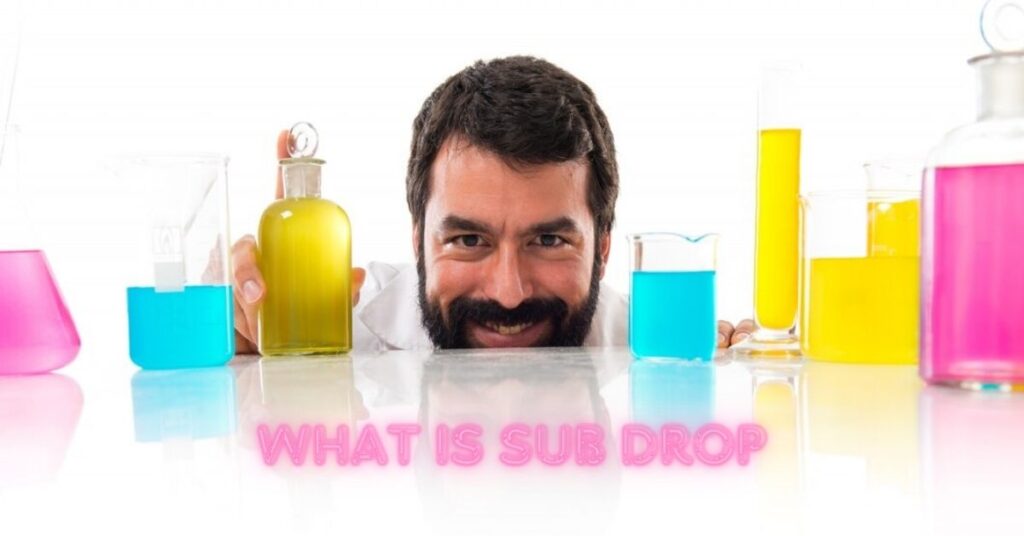Picture this: you’ve just had an intense and exhilarating BDSM session, exploring your deepest desires and pushing boundaries. But as the adrenaline fades away, you start to feel a wave of emotions crashing over you. This phenomenon is known as sub drop, a complex experience that many in the kink community are familiar with. In this blog post, we’ll delve into everything you need to know about what sub drop is, its causes, effects, and most importantly, how to navigate through it with self-care and support. So grab a cup of tea (or maybe something stronger) and let’s explore the rollercoaster that is sub drop together!
Understanding Sub Drop: Definition and Overview
Sub drop is a term used in the BDSM community to describe the emotional and physical response that some submissives may experience after an intense scene. It’s like coming down from a high, where feelings of vulnerability, sadness, or even detachment can surface. This phenomenon is not a sign of weakness or failure; it’s simply a natural reaction to the intense dynamics of power exchange.
When engaging in BDSM activities, especially ones involving dominance and submission, it’s crucial to understand that sub drop can happen to anyone, regardless of experience level. It’s important for both partners to be aware of this possibility and be prepared to provide support and care when needed.
In essence, sub drops highlights the deep emotional connection between partners in kinky relationships. By recognizing and acknowledging its existence, individuals can navigate through these post-scene effects with compassion and understanding.
What Causes Sub Drop?
Sub drop can be triggered by various factors within the BDSM dynamic. One of the primary causes is the intense physical and emotional experiences that occur during a session, leading to a sudden drop in adrenaline and endorphin levels post-play. The power exchange between Dom and sub plays a significant role, as relinquishing control can leave subs feeling vulnerable and exposed once the scene ends.
Another factor contributing to sub drop is lack of aftercare or inadequate communication between partners. Without proper reassurance, grounding techniques, and support from their Dom, subs may struggle to process their feelings effectively post-scene. Additionally, pushing personal boundaries too far or engaging in activities that trigger past traumas can exacerbate sub drops symptoms.
It’s crucial for both partners to understand these potential triggers and prioritize open dialogue, consent, and mutual respect to minimize the risk of experiencing severe sub drop episodes.
The Physical, Emotional, and Mental Effects of Sub Drop
Experiencing sub drop can manifest in various ways, affecting individuals physically, emotionally, and mentally. Physically, one may feel fatigued, achy muscles or headaches as the body comes down from the heightened state of play. Emotionally, feelings of sadness, loneliness or vulnerability might surface as the intense connection with a partner diminishes. Mentally, confusion, anxiety or self-doubt could arise post-scene as the mind processes the intense emotions experienced.
It’s important to recognize these effects are a natural response to BDSM activities and not a sign of weakness. Each person may experience sub drops differently based on their unique emotional makeup and relationship dynamics. Providing adequate aftercare and open communication with partners can help mitigate these effects and promote emotional well-being post-play session.
Remember that self-care is crucial in managing sub drop symptoms effectively. Take time to nurture yourself physically and emotionally after engaging in BDSM activities to ensure a healthy recovery process.
How to Identify and Manage Sub Drop Symptoms
Identifying and managing sub drop symptoms is crucial for maintaining emotional well-being after engaging in BDSM activities. Symptoms may vary from person to person, but common signs include feeling sad, anxious, or emotionally drained post-scene. Physical manifestations like headaches or fatigue can also occur.
It’s important to be mindful of these signals and not dismiss them as simply a “bad day.” Communication with your partner about how you’re feeling is key in addressing sub drops effectively. Taking time for self-care activities such as relaxation techniques, physical exercise, or seeking professional help if needed can aid in symptom management.
Remember that experiencing sub drop is normal and nothing to be ashamed of. It’s a natural response to the intensity of BDSM dynamics. By recognizing the symptoms early on and taking proactive steps to address them, you can navigate through this phase with resilience and care.
Coping Strategies for Dealing with Sub Drop
Coping Strategies for Dealing with Sub Drop can vary from person to person, as each individual’s experience is unique. One effective way to manage sub drops is through self-care practices such as taking time to rest and recharge after a scene. Engaging in activities that bring comfort and relaxation, like reading a book or taking a warm bath, can also help alleviate symptoms.
It’s essential to communicate openly with your partner about how you’re feeling post-play. This mutual understanding and support can make a significant difference in navigating the emotional aftermath of BDSM dynamics. Seeking professional therapy or counseling may be beneficial for those struggling with severe sub drop symptoms.
Exploring grounding techniques, such as mindfulness exercises or breathing exercises, can assist in reconnecting with the present moment and easing feelings of disorientation or detachment. Remember, it’s okay to ask for help when needed and prioritize your well-being above all else.
Communication and Support in the BDSM Community
Communication and support are fundamental pillars within the BDSM community. Open dialogue between partners is crucial to establish boundaries, consent, and ensure a safe and enjoyable experience. It’s essential for individuals to express their desires, limits, and concerns openly without judgment or fear of rejection.
Support in the BDSM community goes beyond physical aspects; it encompasses emotional well-being as well. Being able to communicate feelings of vulnerability or any emotional distress is key to fostering trust and understanding between partners. This support system allows individuals to feel heard, respected, and cared for during intimate interactions.
Moreover, seeking guidance from experienced members of the community can provide invaluable insights into navigating various dynamics safely. Establishing connections with like-minded individuals who share similar interests can create a sense of belonging and solidarity within the BDSM realm.
Communication and support form the foundation for healthy relationships in the BDSM community while promoting mutual respect, trustworthiness, and empathy among participants.
Conclusion: Importance of Self-Care and Aftercare in Kink Relationships
In the world of BDSM and kink relationships, understanding and addressing sub drop is crucial for the well-being of all parties involved. By recognizing the signs, causes, and effects of sub drops, individuals can better navigate their experiences and take proactive steps towards self-care and aftercare.
It’s important to remember that communication is key in any relationship, especially within the BDSM community. Openly discussing boundaries, expectations, and aftercare plans can help prevent or mitigate the effects of sub drop. Providing support to your partner before, during, and after a scene is essential for building trust and ensuring a positive experience for everyone involved.
Prioritizing self-care and aftercare not only promotes emotional healing but also strengthens the bond between partners. By acknowledging the importance of mental health in kinky relationships and practicing empathy and understanding towards one another’s needs, individuals can create a safe space where both pleasure and personal growth can thrive.
Remember: taking care of yourself means taking care of each other too. So stay informed on sub drop symptoms, communicate openly with your partner(s), practice mindfulness in your play sessions, and always prioritize self-care to nurture healthy relationships within the BDSM community.
FAQs
What is sub drop?
Sub drop refers to the emotional and physical experience some submissives may face after an intense BDSM session, characterized by feelings of vulnerability, mood swings, or fatigue.
What causes sub drop?
Sub drop can result from the depletion of endorphins and adrenaline post-scene, combined with the abrupt shift from a heightened state of arousal to normalcy.
How long does sub drop last?
The duration of sub drop varies widely among individuals and can range from a few hours to several days. Self-care and aftercare play crucial roles in managing its effects.
What are common symptoms of sub drop?
Symptoms may include emotional sensitivity, lethargy, anxiety, or a sense of detachment. Communication with partners and self-awareness are essential in recognizing and addressing these symptoms.
How can sub drop be managed or prevented?
Prioritizing thorough aftercare, maintaining open communication with partners, and practicing self-awareness are key in managing and potentially mitigating the effects of sub drop.







